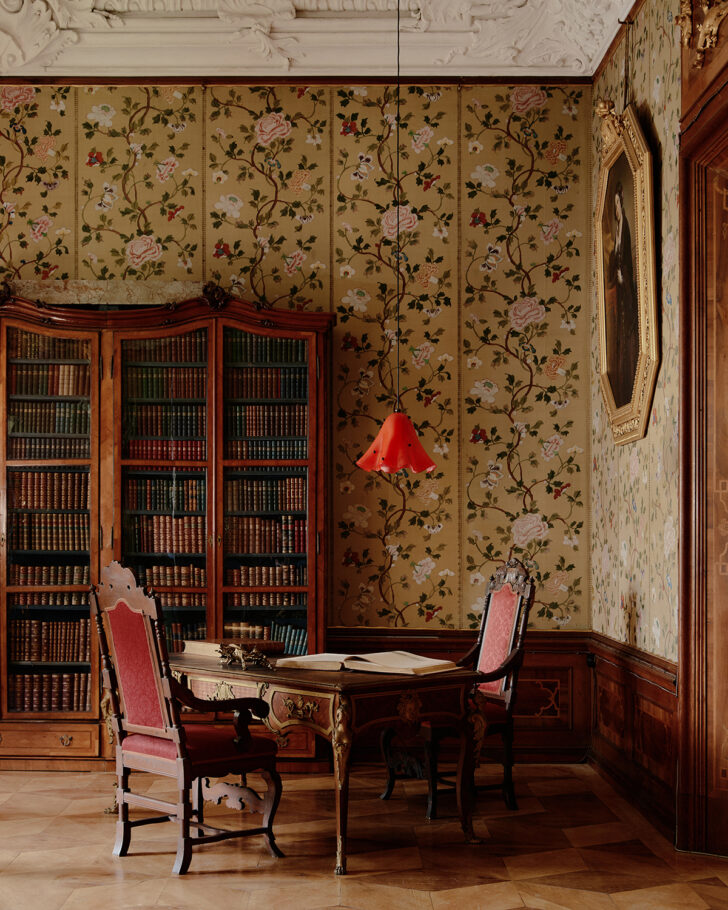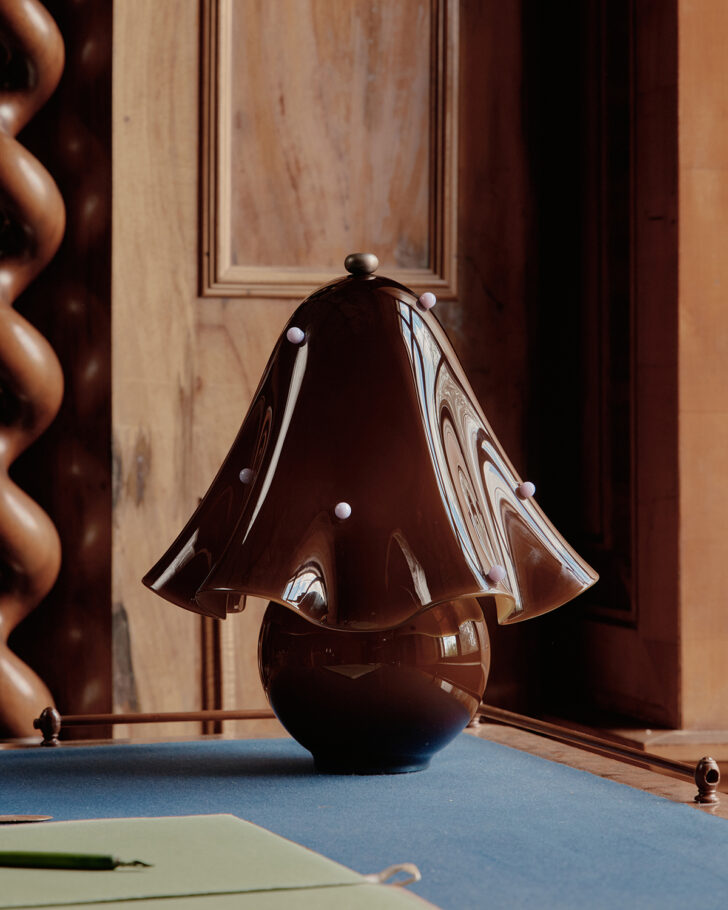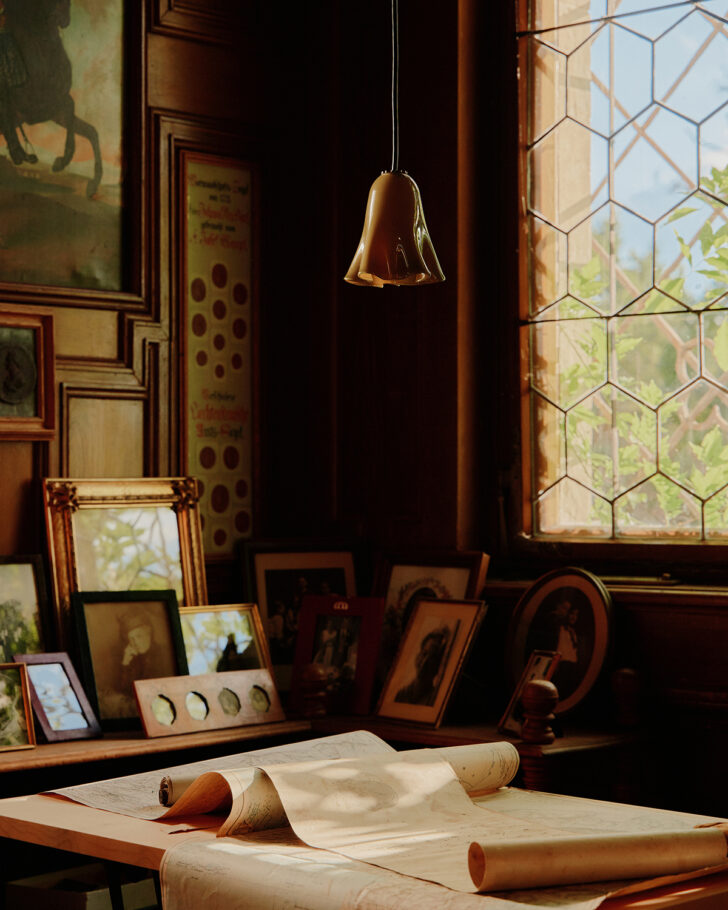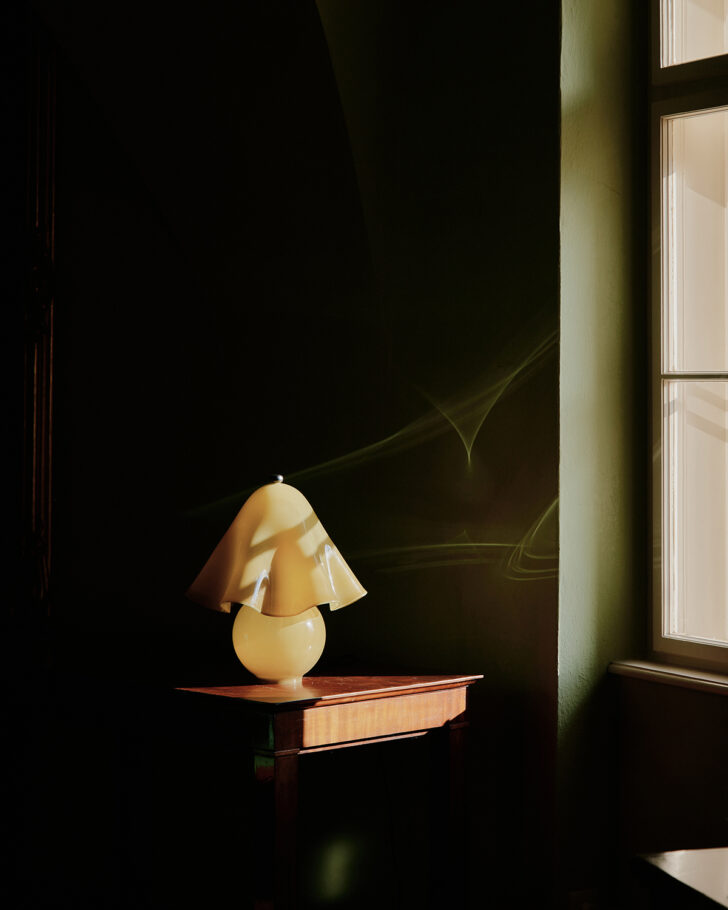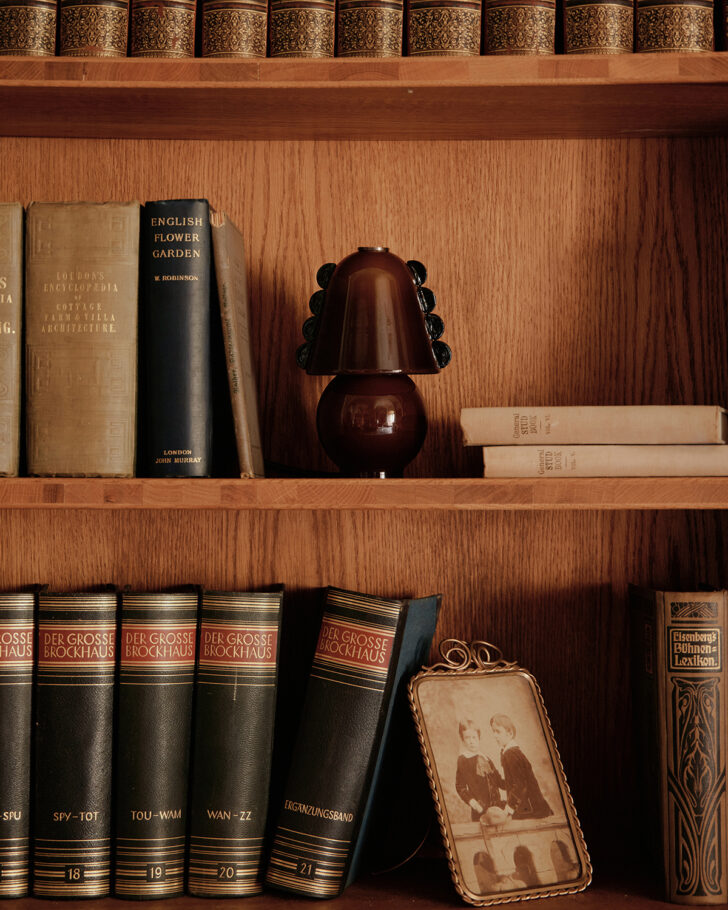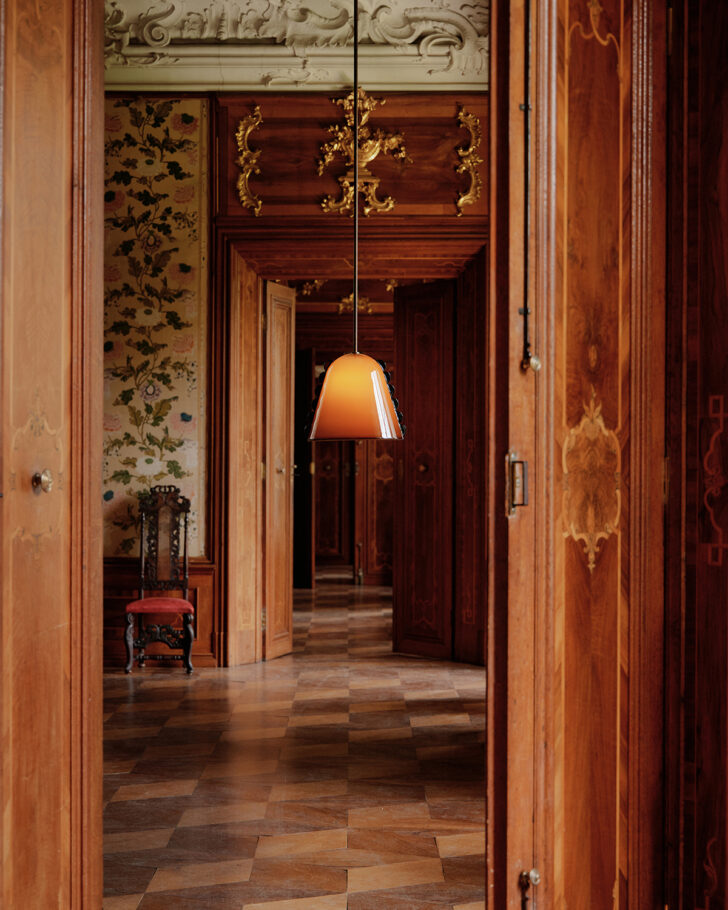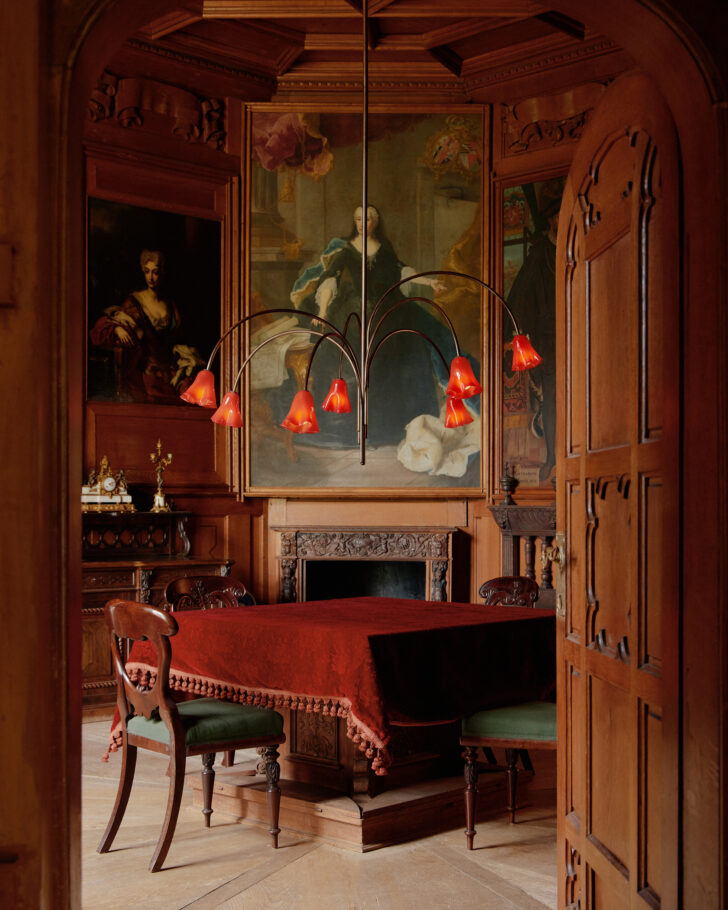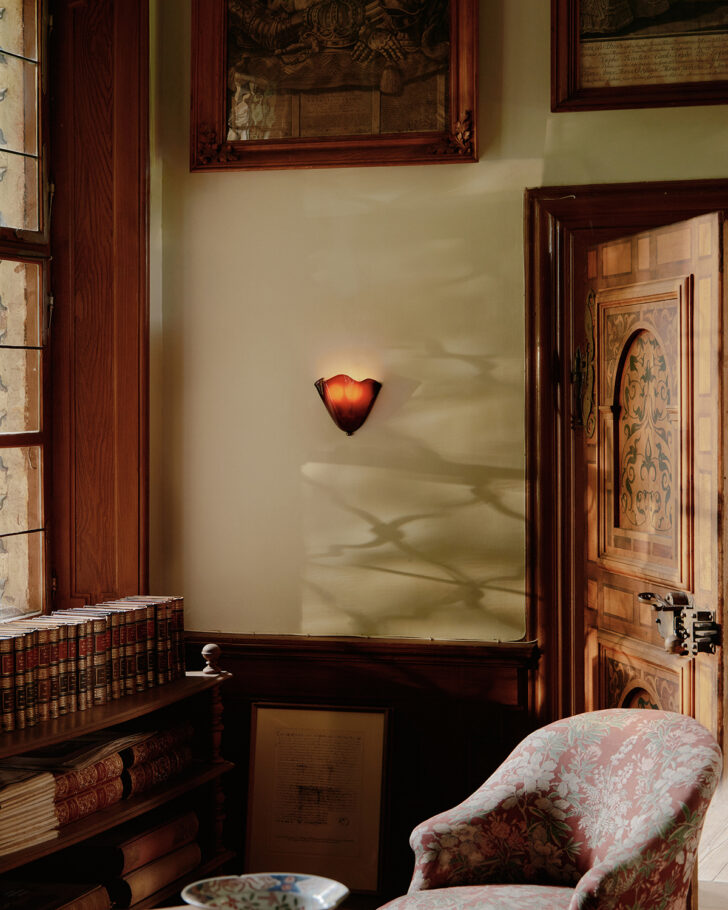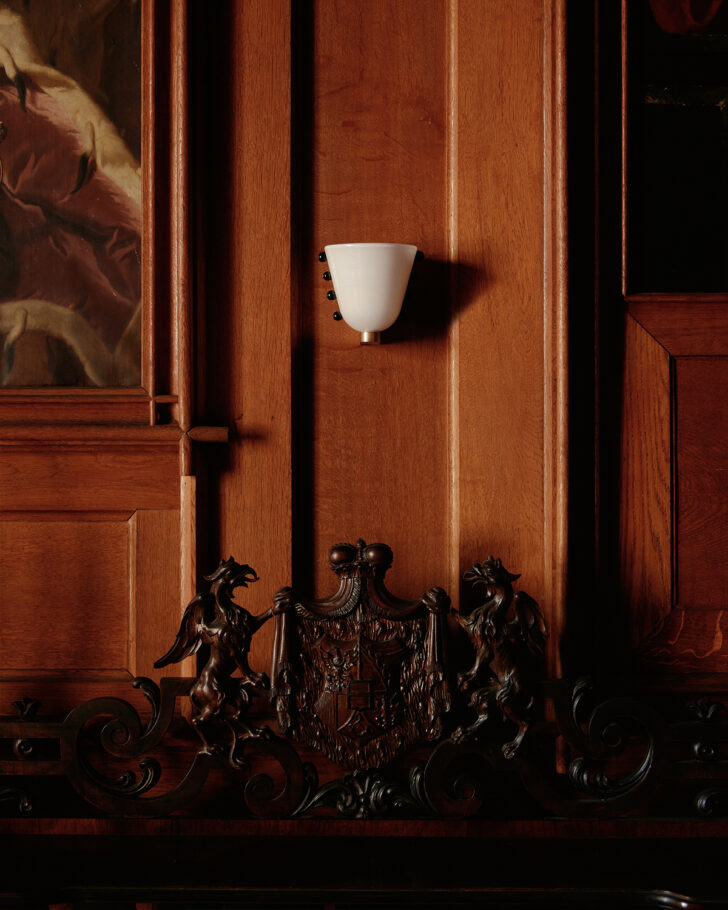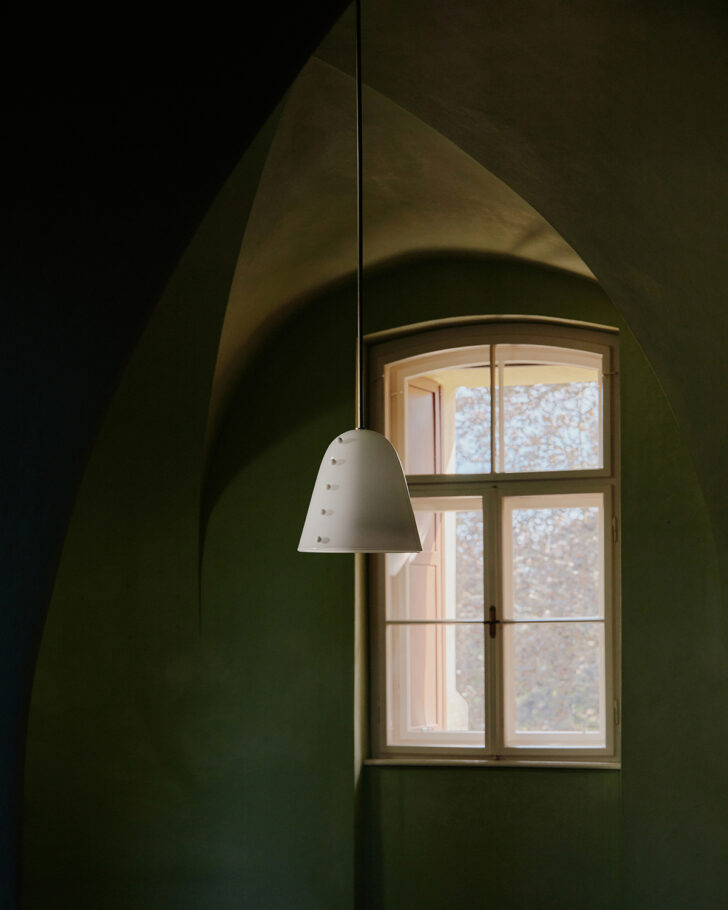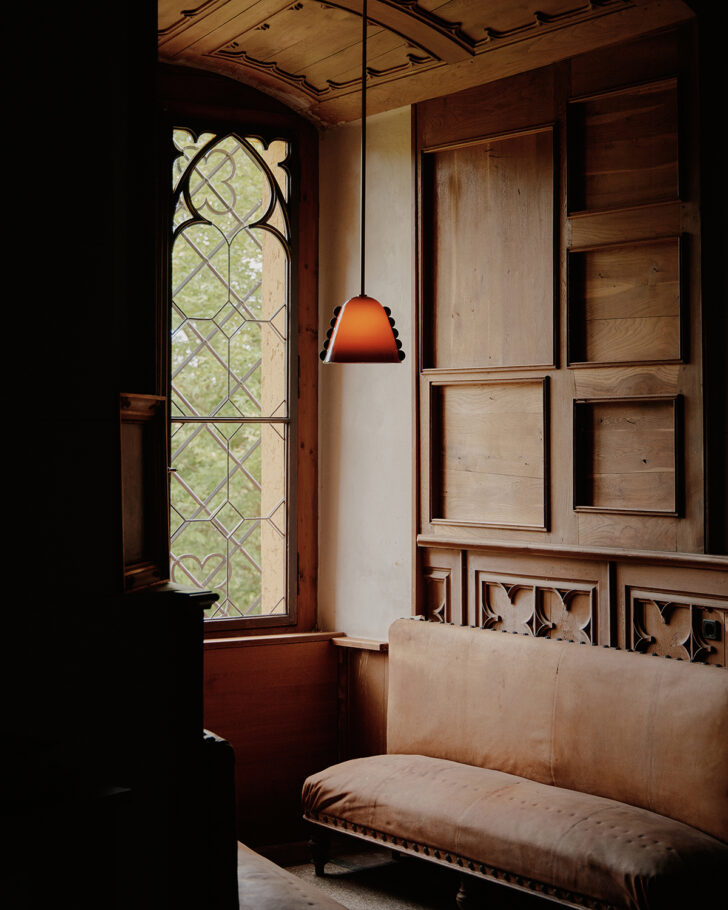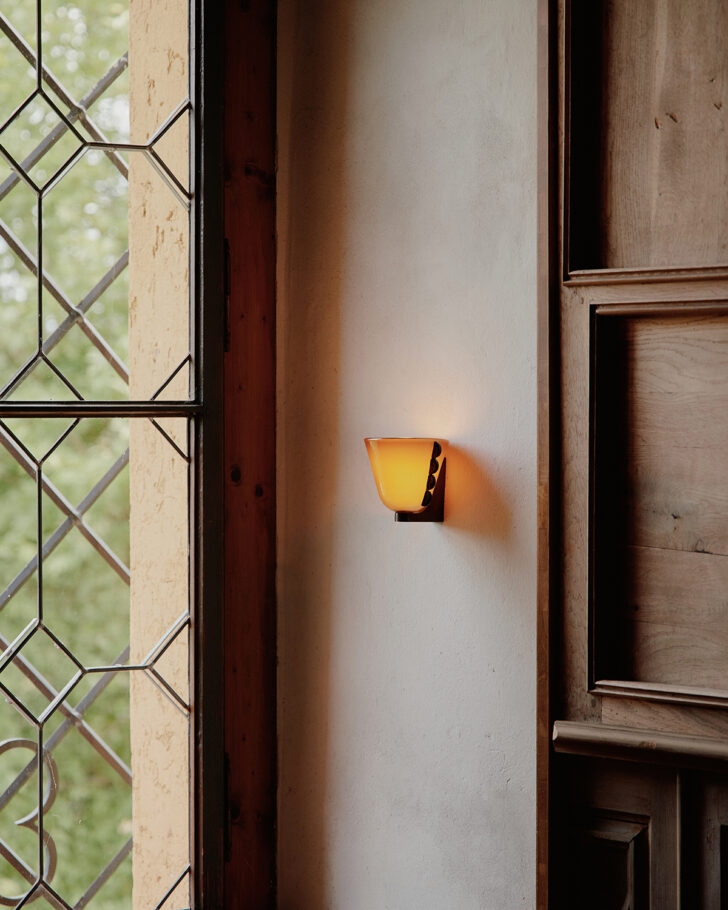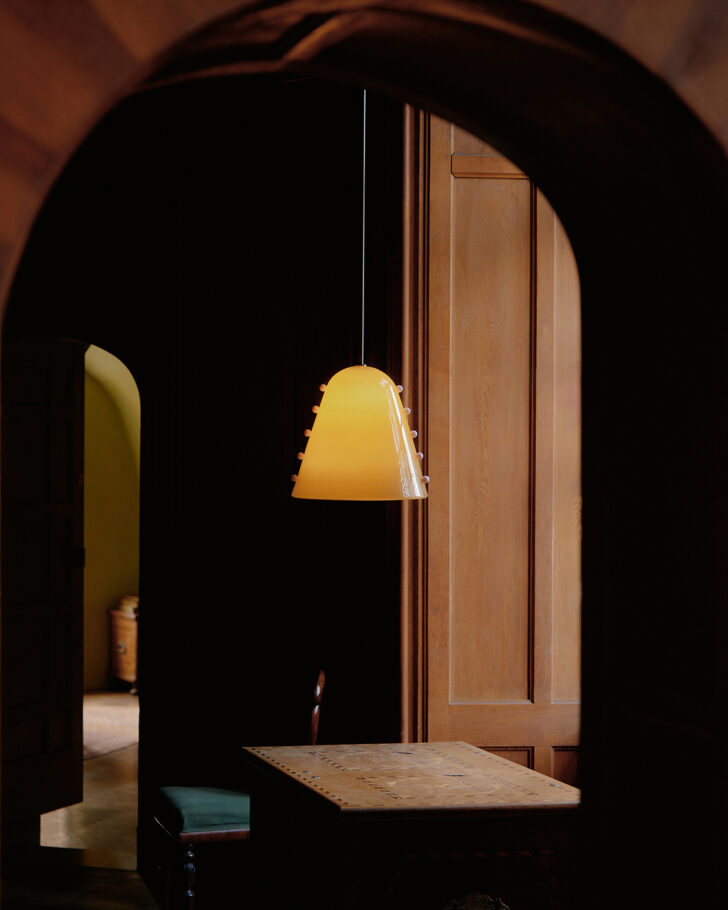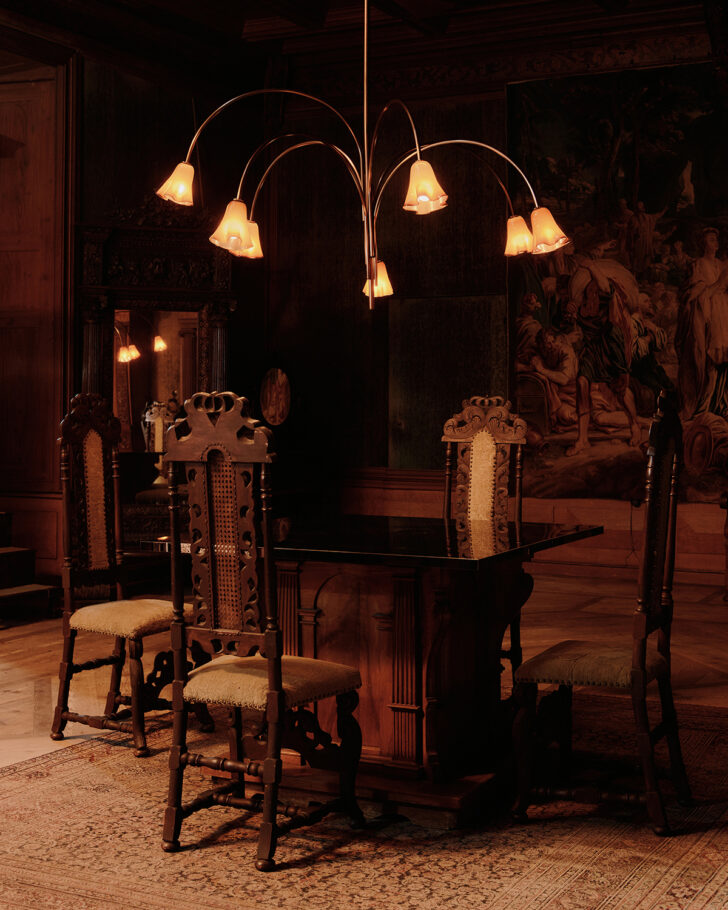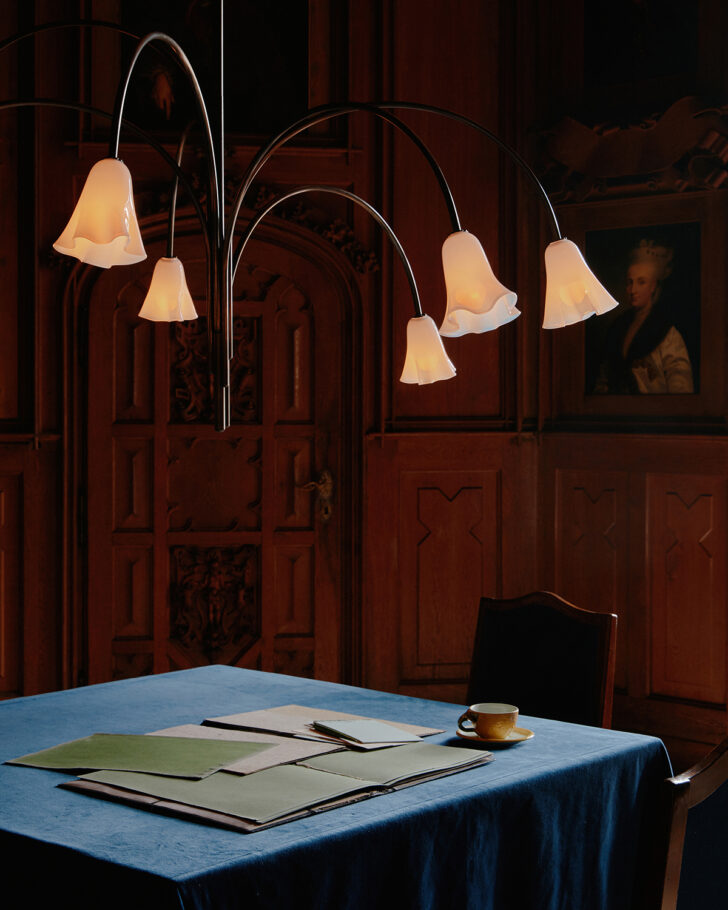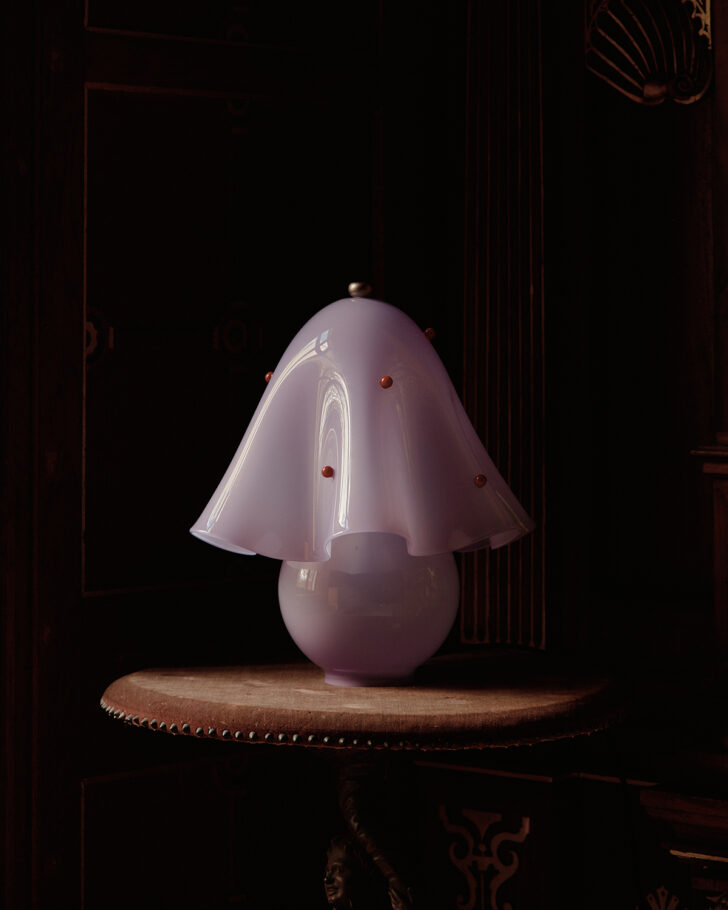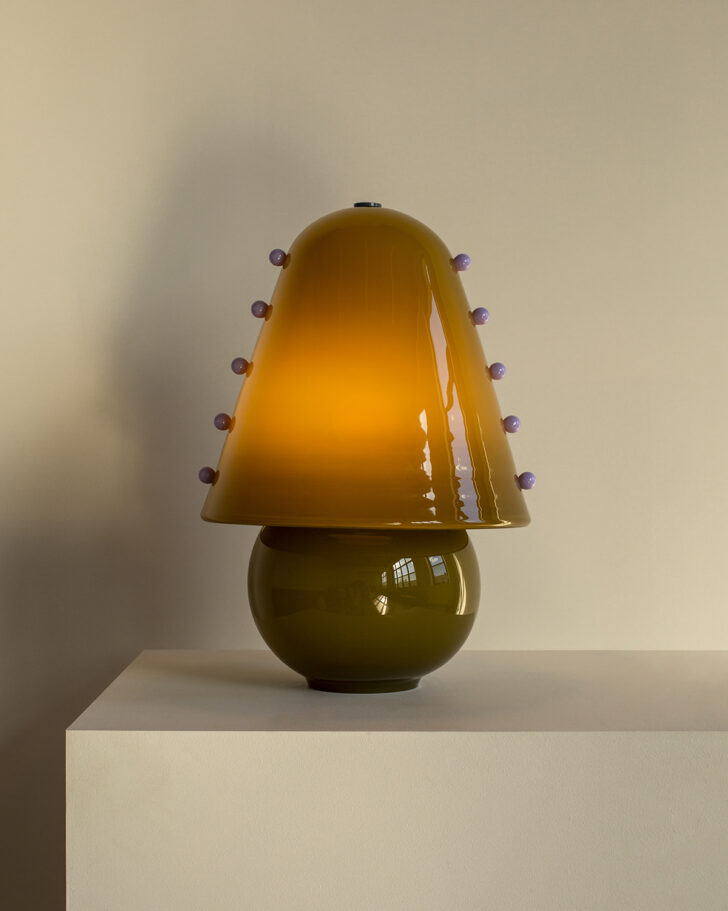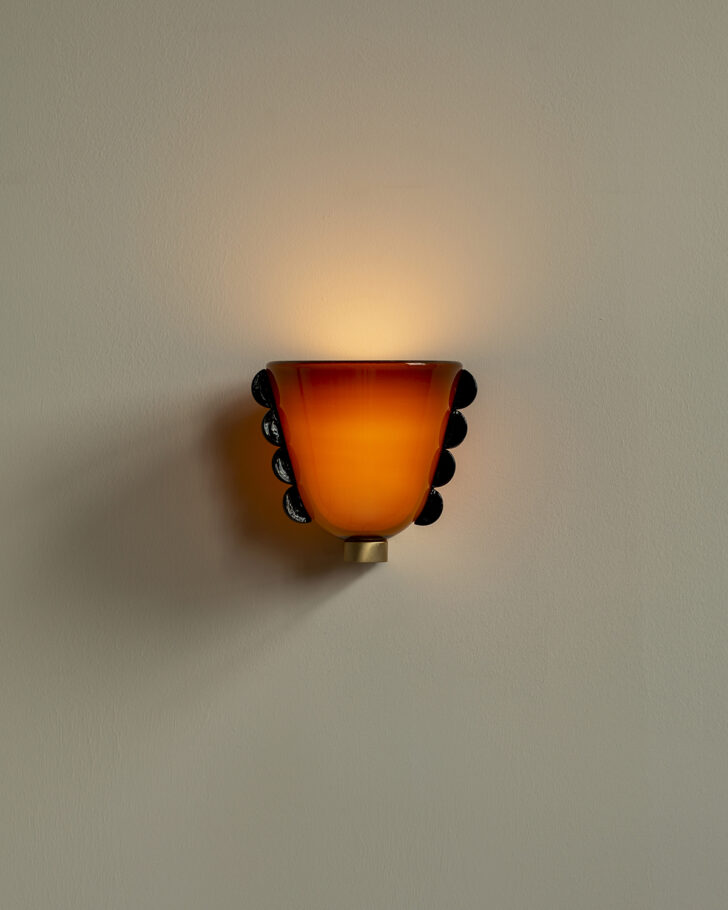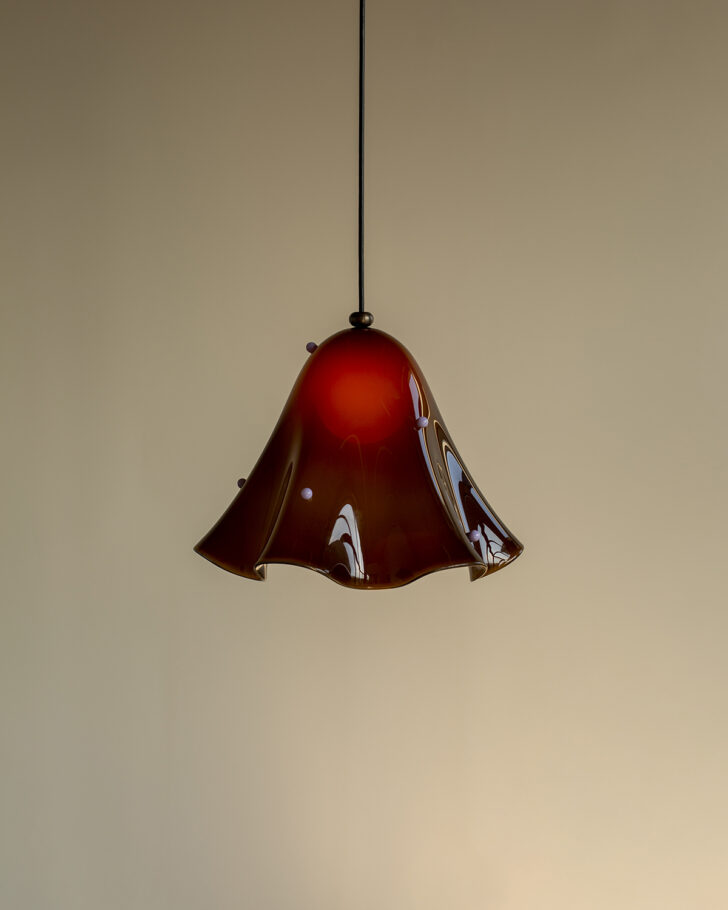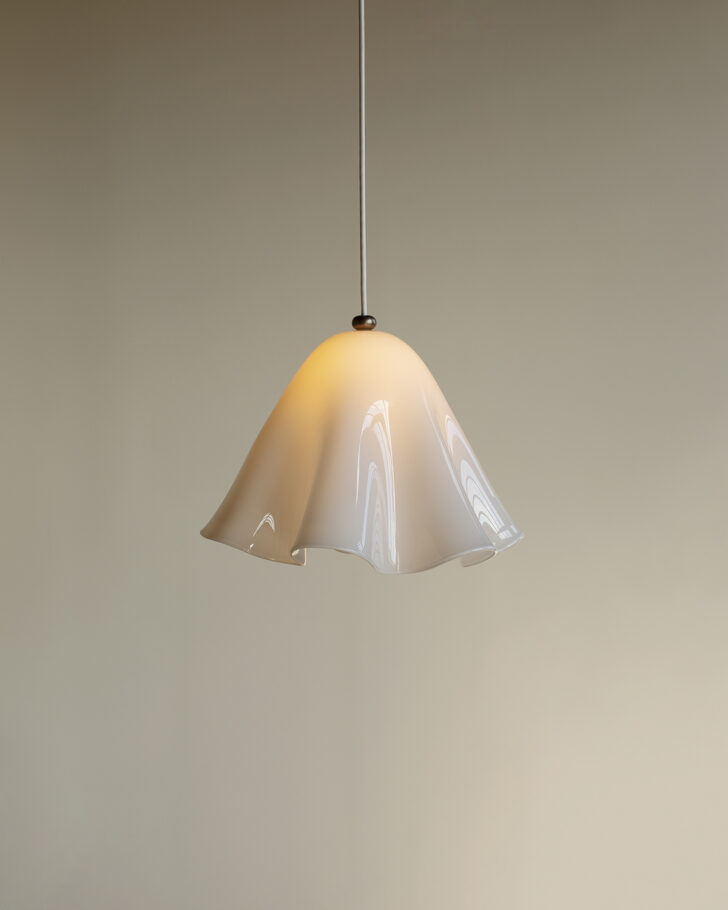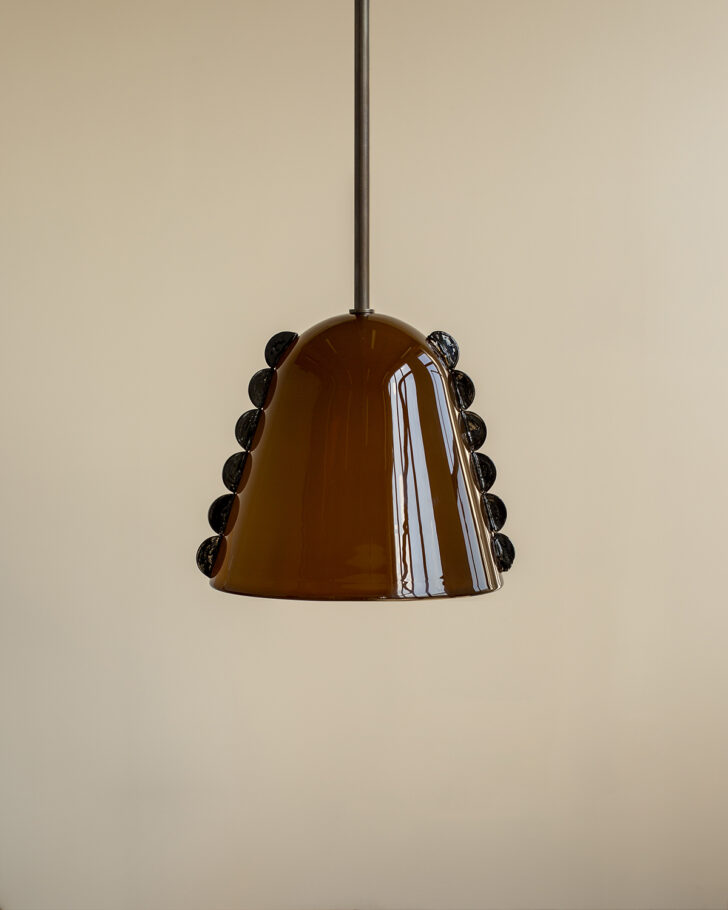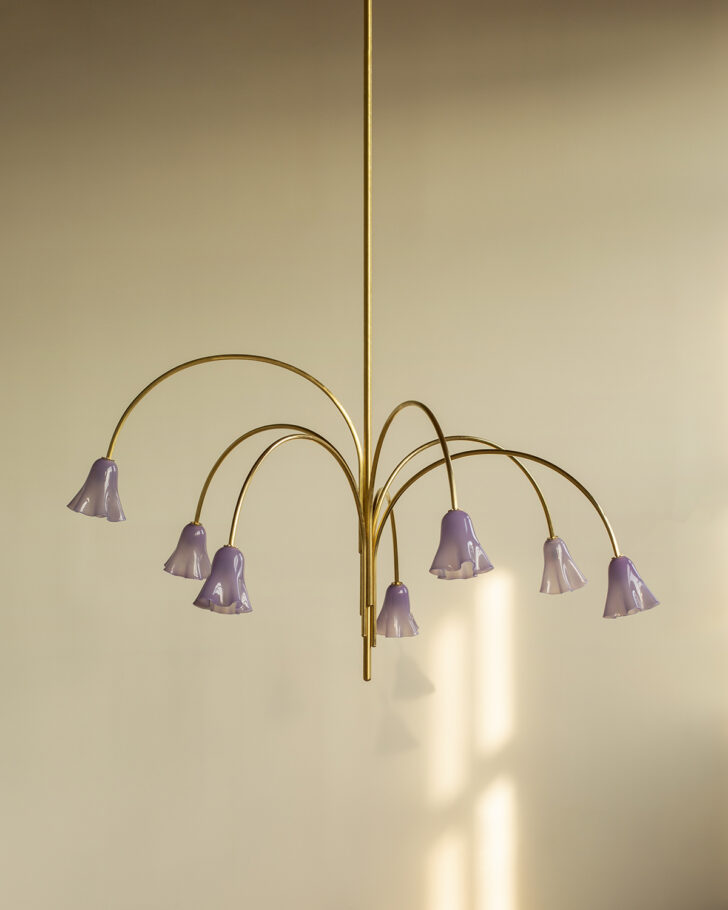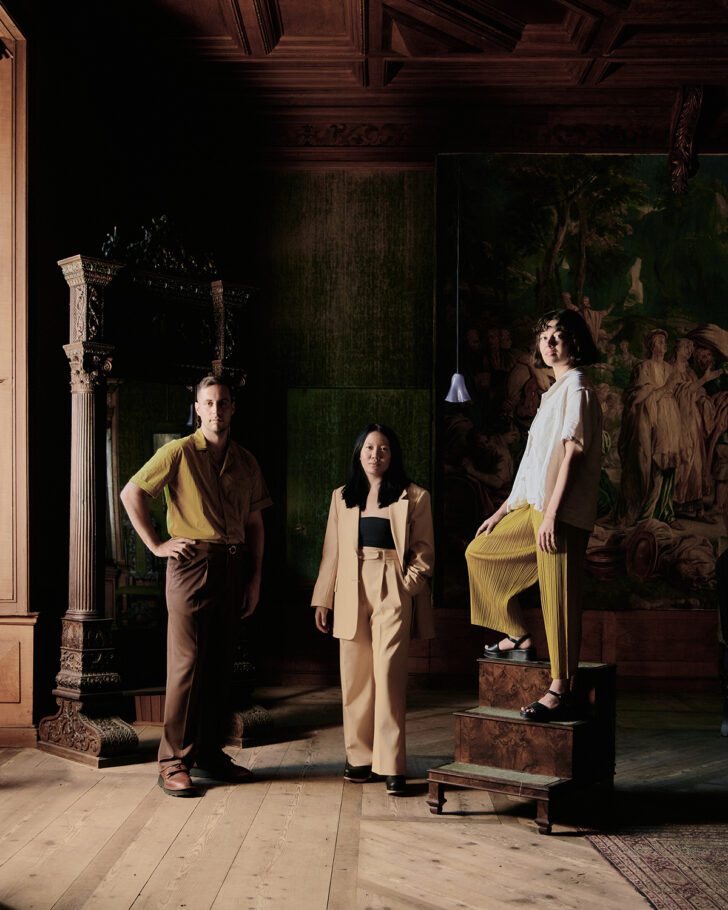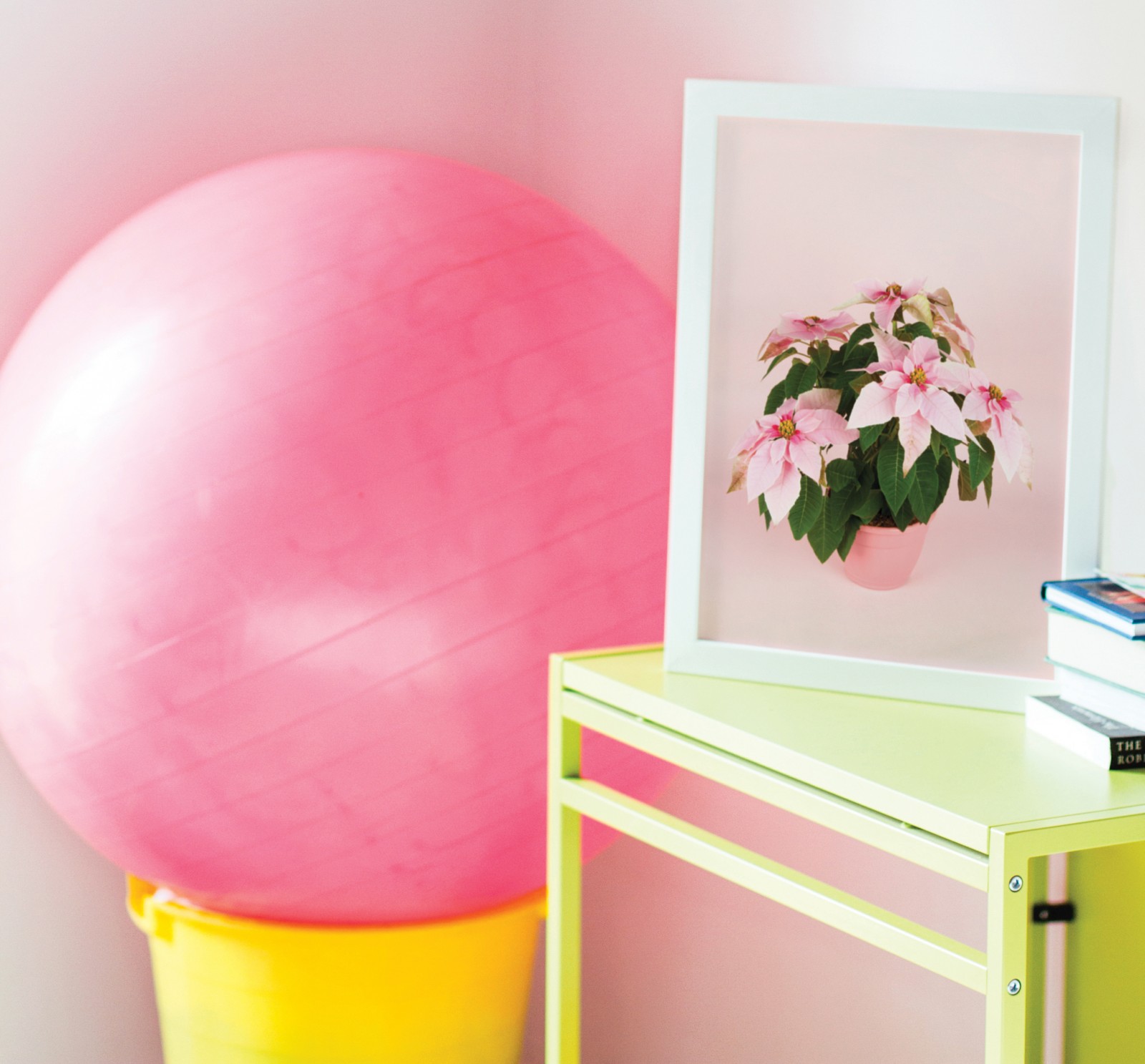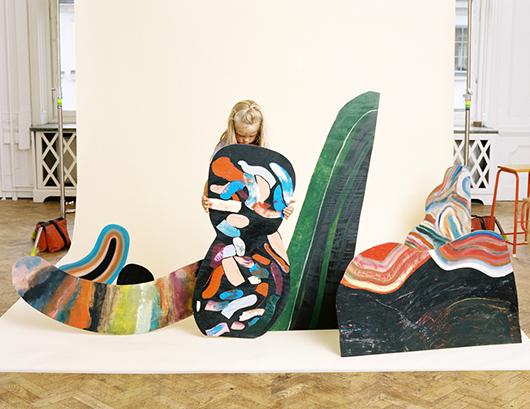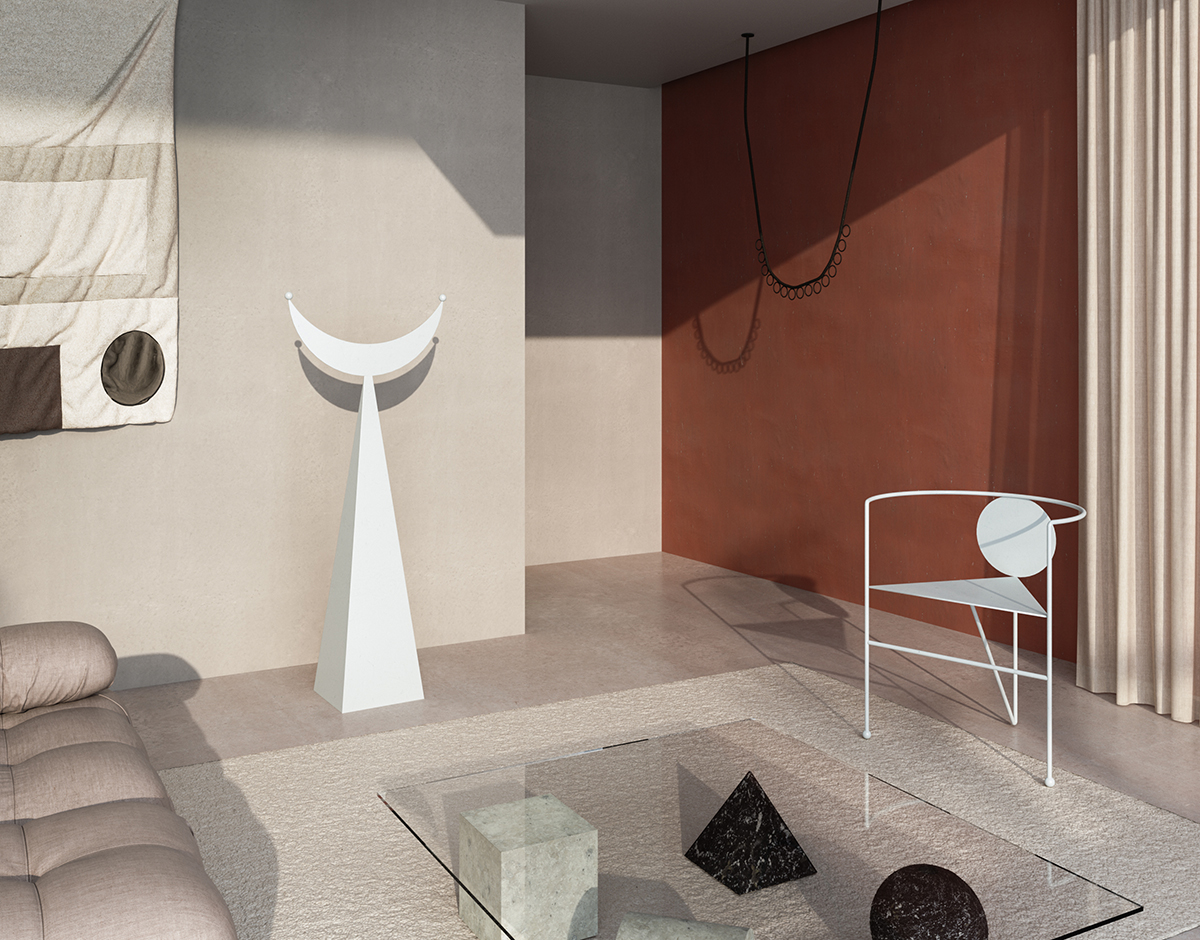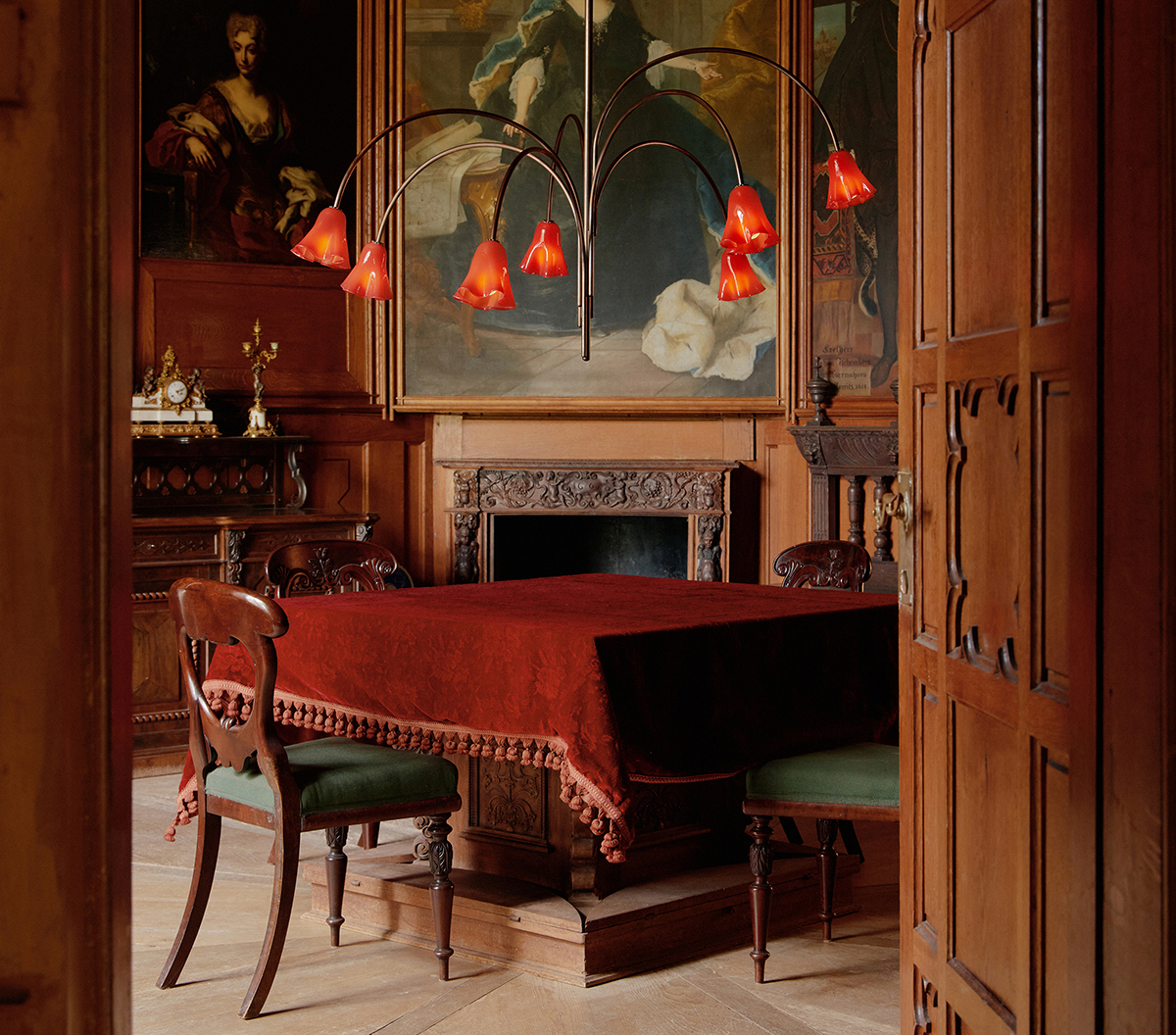
09.16.22
Sighted
In Common With and Sophie Lou Jacobsen’s Collab Lighting Collection is the Drama We Need Right Now
There’s a wonderful sense of mystery in the new lighting collaboration between Brooklyn-based studio In Common With and French-American glassware designer Sophie Lou Jacobsen. The Flora collection, as its name suggests, draws on the forms and proportions of plant life — but not your average bouquet or potted succulent. More like an unknown but totally intriguing specimen you might encounter growing on the forest floor. The 20 pieces here feature hand-blown, mold-blown, and slumped glass in milky off-white, amber, lavender, soft browns, and reds. Sconces are edged with dark, scalloped details, tables lamps and pendants are mushroom- and bell-shaped; and on a gorgeous chandelier of curving brass arms, delicate shades of draped glass resemble the blossom of an Angel’s Trumpet.
Since 2017, In Common With’s Nick Ozemba and Felicia Hung have been producing lighting characterized by a spare elegance but with evident human touches, like the warmly pigmented handmade clay shades of their Dome pendant or their textured ceramic sconces and wall mounts. Though they’ve worked in hand-blown glass before, this series is a bit of a departure, particularly when it comes to shape and color. The joint effort, which is Jacobsen’s first foray into lighting, also takes Jacobsen’s work in a somewhat different direction. The signature squiggles, undulations, and ornamental dots that give her tableware pieces a fun, lighthearted quality, are staged and styled here with shadowy drama. (The shoot location, at Austria’s Schloss Hollenegg for Design, certainly doesn’t hurt).
While botanical elements form the aesthetic basis for the collection, another inspiration is at play here, too: the wavy Fazzoletto (“handkerchief” in Italian) vase, originally produced in 1948 by Murano glass designers Paolo Venini and Fulvio Bianconi. To create this shape, molten glass is spun downwards, into folds that resemble fluttering fabric. While the Flora collection draws on Venini’s technical methods and traditional Venetian glasswork, it’s also influenced, in spirit, by Venini’s collaborative, forward-thinking ethos. In 1932, the designer brought on a young Carlo Scarpa and they worked together until 1947, modernizing the art form at the Venini factory. Marrying long-established methods to a novel style so often produces work that feels both of its moment and out-of-time — and Flora, now, is no exception.
PHOTOS BY WILLIAM JESS LAIRD
